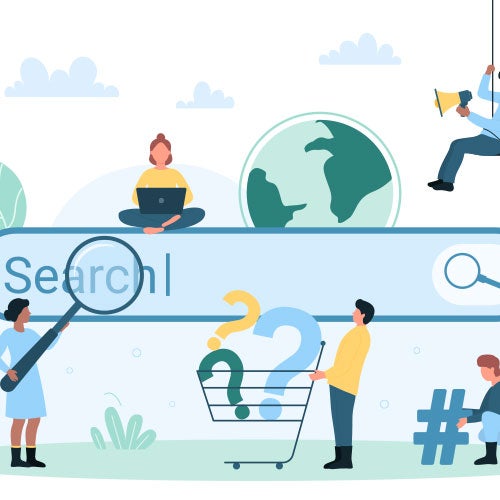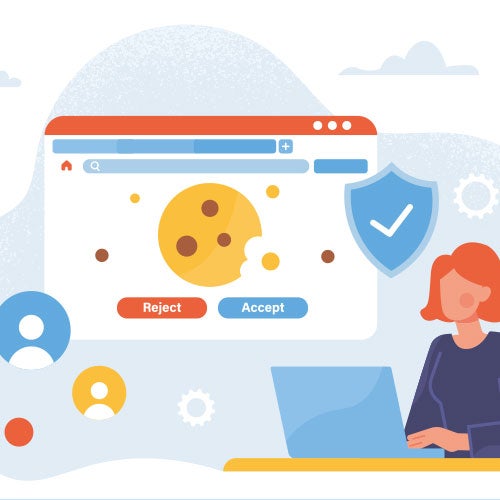Posted on 1/18/2018 in Digital Marketing
By wakefly
In this article, we're going to explore the top 5 things that I've come to find most important to know about SEO:
1. Speak to the customer, not the crawler. Don’t talk like a robot, be conversational in your SEO efforts.
2. Make sure Google can read and see your website. Be sure Search Console is set up and that your monitoring it consistently to find errors.
3. Times change, make sure you keep up. Make sure you’re not using out of date SEO practices.
4. It’s not just keywords, it’s becoming more and more about experience. Ease of use and intuitiveness of your website goes a long way.
5. You can learn a lot by just looking at the SERP page for relevant keywords. You don’t always need to use expensive tools to learn how to grab the top spots.
Speak to your users, not the crawlers and bots
This sounds obvious but you’ll be surprised how the brain - when you keep talking about bots, crawlers, and spiders reading your website - ends up speaking like a robot. This is apparent when you find yourself working on a client’s on-page SEO writing title tags and meta descriptions back-to-back-to-back. Fight the urge and keep telling yourself to write for the user and keep it conversational. Include keywords, but don’t go overboard, make sure it flows and sounds natural, while at the same time being clear about the page’s topic.
Make sure Google can crawl your website
Everyone becomes obsessed with on-page and off-page SEO, SERPs, and keywords that many often forget the less sexy task of ensuring that Google’s spiders can actually crawl your website. If Google can’t crawl your website, then all of your SEO efforts are for naught. Head over to Google Search Console and see if your website is set up. If it’s not, hit the red “Add a Property” button in the top right after signing in and follow the steps to get started. Once you’ve verified your property, set up the basics like your Sitemap URL (at the same time make sure your site actually has one, most CMS defaults to “/sitemap.xml”), test your robots file and ensure your file isn’t blocking important pages (or your whole site) and check out the “Index Status” of your site in the “Google Index” section. Does it look like Google’s indexed most, if not all of your site’s pages? Are there a lot more pages indexed that you actually have? In either case, start digging for answers. The best place to start is your robots.txt file.
Times change, make sure you keep up
SEO, SERPs, Algorithms, Engines, Crawlers, Bots, and Spiders are all constantly evolving. Check out MOZ’s Google Algorithm Change History log if you don’t believe me. If you don’t have your finger on the pulse of the changing landscape and the latest trends, it may mean that you’re falling behind in the game. It’s a never ending game of cat and mouse. The latest Google update almost doubled the amount of characters in a meta description. If you or your client’s site hasn’t been updated or audited in a few months, I would recommend you read up on the latest trends and make sure none of your previous work is out of date.
It’s not just about keyword optimization, it’s become more and more about user experience
Don’t get so caught up with keywords that you put your user experience on the back burner. Do your keyword research, make sure you target and implement them to the proper pages on your or your client’s site then move on. If you’ve done everything right, you can sit back and let them “bake”. Afterwards, turn your attention to how users use your website. Ask yourself, are they interacting with what you want them to interact with? Are they getting to the conversion points? Are they doing something completely different? Are they struggling to complete a task on the website? Can you remove any barriers? Make sure your site is functioning as you want and that users are accomplishing what they, and you, need to accomplish. Why? Google takes into account time on site, bounce rate, and click through rate when determining where to rank websites.
You can learn a lot just by looking at SERPs
Don’t just stick to your everyday SEO technology platforms. Perform the search yourself and see what you can find. Study the landscape of the SERP page. These days, a SERP varies wildly depending on the search terms. Be sure that the page you are trying to get ranked for that specific keyword matches what Google is showing its searchers. Look at your competitor’s tactics, what methods are they using to grab that top spot? Identify what Google values, take a close look at what words and word combinations it bolds in the SERP.
Looking for quick ways to improve your organic rankings?
Find out which quick wins Wakefly can identify for your site through our SEO audit
Related Articles

Elevating Your Brand: The Transformative Power of Website Design
In the digital age, your website is often the first point of contact between your brand and potential customers. It's not just a platform to showcase [...]

Navigating the Effects of SEO Algorithm Adjustments in 2024 on Your Website's Rankings
In the fast-paced world of digital marketing, staying ahead of algorithm updates is crucial for maintaining a competitive edge. As we step into 2024, [...]

Rethinking Digital Strategies: Marketing in the Post-Third-Party Cookie Landscape
In the ever-evolving realm of digital marketing, the impending demise of third-party cookies poses a significant challenge for businesses worldwide. [...]

